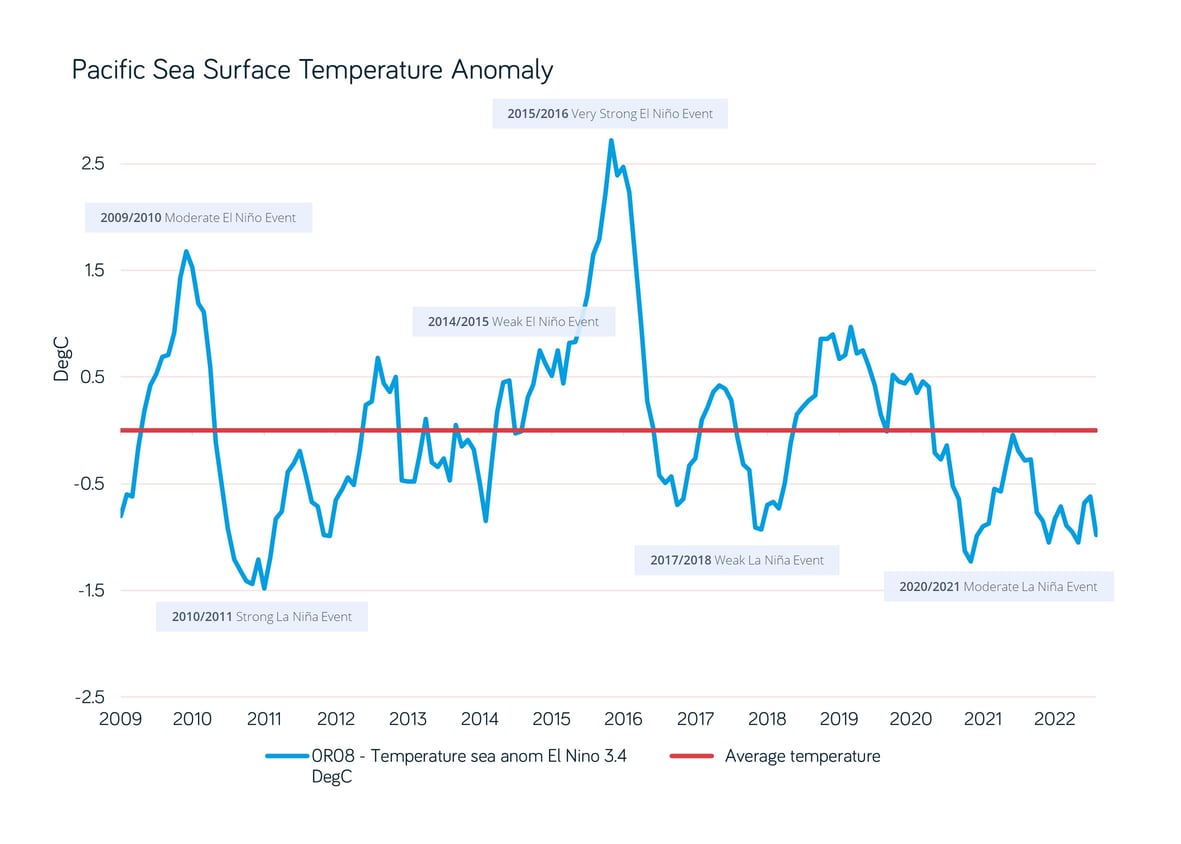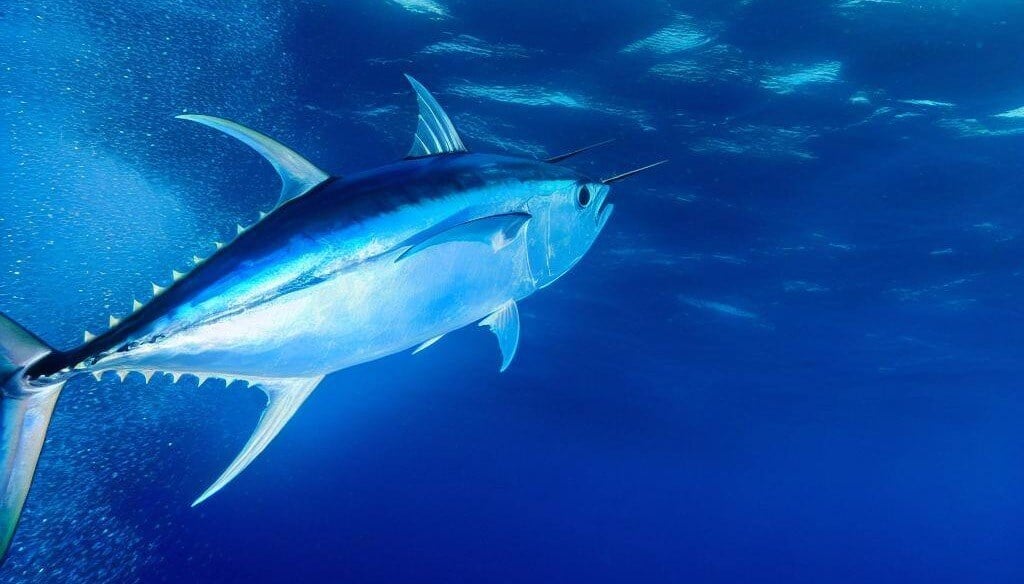A particularly rare event is predicted to unfold this year, further threatening agricultural land already suffering under extreme weather conditions. Many countries have faced intense and sometimes unforgiving weather patterns in recent years, partly as a consequence of the current ‘double La Niña’ event. Scientists at the United States National Oceanic and Atmospheric Administration (NOAA) now project a ‘triple La Niña’ event for the end of the year, potentially prolonging some of these unfavourable conditions.
In the late months of 2020, sea surface temperatures in the Niño region 3.4 dropped past 0.5°C below normal, initiating the first months of the ongoing moderate La Niña event. Since then, the temperatures have remained below average and forecasters at NOAA are predicting a rare third consecutive La Niña season. The chances of the phenomenon existing into the Northern Hemisphere winter 2022/23 is over 90%, with predictions weakening slightly in the new year. La Niña events often appear in two-year cycles, but a third year is less common, with the last encounter occurring from 1998 until 2001.
The relationship between the Pacific Ocean sea surface temperature and the atmosphere has a knock-on effect on the climate systems globally. For this reason, La Niña events tend to create typical weather systems in certain parts of the world. Most reportedly are the dry conditions that have prevailed in southern United States, impacting crops like grains, oilseeds and cotton. Also, the event has caused prolonged dry conditions in central-southern Brazil over the past two years, as well as recent heavy rainfall in Southeast Asia and dryness in eastern China.
A third year of La Niña could result in more extreme weather cases globally. Drought conditions could continue to impact central Brazil, as it has since November 2020. Moderate increases in rainfall during the 2021/22 season have slightly raised yield expectations for some crops in the country, such as oranges, coffee and sugar, although it has still been too dry for optimum growth. Conditions have also been particularly dry in China during 2022, causing problems for many commodities. China is a major production and export centre for agricultural commodities, threatening many different markets, including rice, grains and cotton. Many other countries and crops could face extreme conditions should the La Niña remain.
La Niña events are also known for fuelling more intense Atlantic hurricane seasons. As the Pacific Ocean cools, the atmospheric stability wanes over the Atlantic, acting as a catalyst for storm development. The 2021 Atlantic hurricane season turned out to be the third-most active on record, with more named storms than average and of higher intensity. The peak month of activity is often September, so as the La Niña begins to strengthen again, this could bring a wave of tropical activity to the 2022 Atlantic hurricane season, further threatening agriculture.


.png?width=145&height=54&name=Mintec_Logo_Small_Use_Mono_RGB%20(2).png)


















